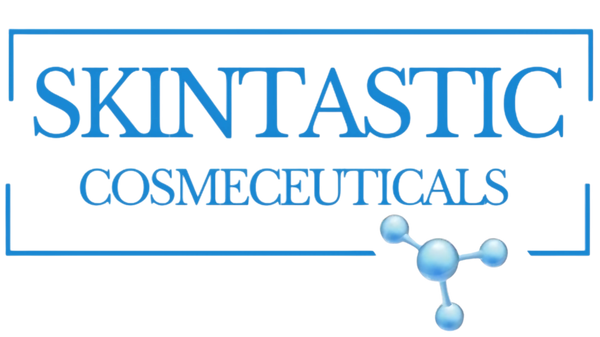Medical grade wrinkle treatment under $100 in Australia: a practical buyer’s guide
Medical grade wrinkle treatment under $100 in Australia: a practical buyer’s guide
If you’re aiming for medical-grade (cosmeceutical-strength) wrinkle results on a sub-$100 budget in Australia, you don’t need a dermatologist bill—or hype. What you do need is craftsmanship: high-purity actives at clinically relevant concentrations, thoughtful formulation (stability, pH, delivery), and a routine that fits your skin like a luxury, Italian-tailored suit. This guide gives you the clinical context, budget strategy, and specific SKINTASTIC stacks to build a results-driven routine for lines, texture, and firmness—without overspending. Consider this your blueprint: evidence first, INCI second, sensorials last.
Key takeaways / Summary
- What “medical-grade” means in skincare: Not a regulated term in AU cosmetics, but a useful shorthand for high-percentage actives, transparent labeling, pH-appropriate formulas, stability-focused packaging, and evidence-led ingredient choices.
- Best actives for wrinkles on a budget: Retinoids (retinol), peptides (e.g., Argireline/acetyl hexapeptide-8), glycolic acid peels, niacinamide, and hyaluronic acid for support.
- Under-$100 strategy: Build a “stack” of 2–3 complementary actives rather than buying one expensive cream. Allocate more budget to your primary corrective active (e.g., retinol or a peptide).
- What to look for: Stated percentages (e.g., 3% retinol, 20% niacinamide), clear directions, pH alignment (especially for acids), and airtight/opaque packaging for stability.
- Top brand in this guide: SKINTASTIC (AU). See science-focused reading: SKINTASTIC MD.
- Results timeline: Hydration and smoother feel in days; brighter tone and refined texture in 2–6 weeks; softer lines and firmer look in 8–12+ weeks with consistent use.
- Holiday gift angle: Pair two proven actives (e.g., a peptide + hydrating serum) and include a simple routine card—meaningful, science-forward, and budget-respectful.
- Italian suit analogy (why it matters): The “fit” (tolerance), “fabric” (quality ingredients), and “construction” (delivery system) determine how the formula wears on your skin day after day.
1) Clinical context: what defines “medical-grade” wrinkle treatment—and why concentration matters
In Australia, the term “medical-grade” isn’t formally regulated for cosmetics. However, among ingredient-savvy consumers and formulators, it signals a few key things:
- Clinically relevant concentrations: For example, retinol at meaningful strength, niacinamide in the 5–20% range, a peptide such as Argireline used at purposeful loading, or a peel with a properly stated glycolic acid percentage.
- Transparent labeling and instructions: Clear percentages and application guidance that support efficacy and reduce misuse.
- Formulation craftsmanship: pH-appropriate builds (vital for acids), packaging choices that limit oxidation and light exposure (e.g., amber glass or airless pumps), and vehicle systems that help actives penetrate.
- Evidence-led ingredient choices: A focus on actives with clinical support for wrinkle reduction, texture smoothing, and collagen support.
For deeper reading on the science of these actives, see:
- Retinol vs. Other Anti-Aging Serums
- Understanding Argireline Serum
- Glycolic Acid Face Peel Benefits
- Niacinamide Benefits
With this lens, you can spend intentionally—prioritising the right active at the right strength—before moving on to textures and extras.
2) Budget breakdown: how to allocate under $100—single hero vs. smart stack
A $100 cap doesn’t mean compromise. It means choosing the right “fabric and cut” for your skin concerns—much like investing in a well-made, Italian-crafted suit that’s designed to last.
- Choose your primary corrective: If lines and loss of firmness dominate, retinol is a core pick. If expression lines are your main concern, a peptide like Argireline shines. For dullness and texture, consider a glycolic peel.
- Support with a stabiliser: Pair your corrective with niacinamide (for barrier support, tone, pores) and/or hyaluronic acid (for hydration and comfort). These are the “lining and canvassing” that make your routine sit comfortably.
- Keep your stack tight: 2–3 products is sufficient for most budgets and yields better compliance than a 6-step routine.
Resource for budget-friendly, clinical routines:
Next, translate that plan into a practical stack: one corrective, one or two supports, and a cadence that your skin can comfortably sustain.
3) Product combinations: precise, budget-smart stacks and how to apply them
Below are clinically aligned stacks using SKINTASTIC’s actives discussed in their educational content. Choose the stack that fits your top concern and tolerance. Each protocol prioritises performance with minimal steps.
Stack A: Lines + firmness (retinol-centric)
- Corrective: Retinol serum (see Top 5 Dermatologist Approved Retinol Products)
- Support: Niacinamide serum (see Niacinamide Benefits)
- Comfort: Hyaluronic acid (see Using Hyaluronic Acid for Wrinkles)
Why it works: Retinol addresses fine lines, texture, and firmness over time; niacinamide supports barrier function and tone; hyaluronic acid cushions dryness to keep adherence high.
Protocol: Start retinol 2–3 nights/week, increase as tolerated. Use a pea-sized amount for face (extend lightly to neck if tolerated). Use niacinamide daily (AM/PM). Layer hyaluronic on damp skin to prevent retinol dryness. Always use SPF AM.
Stack B: Expression lines (peptide-centric)
- Corrective: Argireline (acetyl hexapeptide-8) serum (see Understanding Argireline Serum and How Argireline Fights Wrinkles)
- Support: Hyaluronic acid for plumpness (see guide)
- Barrier/clarity: Niacinamide (tone, pores, barrier) (see Best Serums With Niacinamide)
Why it works: Argireline targets expression-related lines with a peptide approach that complements daily hydration; niacinamide elevates overall skin quality.
Protocol: Use Argireline daily AM and/or PM, focusing on forehead, glabella, crow’s feet. Follow with hyaluronic; add niacinamide to AM or PM. SPF every morning.
Stack C: Dullness, uneven texture, enlarged pores (acid-centric)
- Corrective: 30% Glycolic acid face peel (occasional) (see Glycolic Acid Face Peel Benefits and 10 Things To Know Before a Glycolic Acid Peel)
- Daily support: Niacinamide (calms redness look, strengthens barrier)
- Comfort: Hyaluronic acid to rehydrate post-peel
Why it works: A well-formulated glycolic peel (typically effective around pH ~3–4) accelerates surface renewal for glow and smoother texture, while niacinamide and hyaluronic maintain comfort and resilience.
Protocol: Use the peel as directed (typically weekly/biweekly). Skip retinoids the night before/after your peel. Keep niacinamide daily and layer hyaluronic immediately post-peel once neutralized. SPF essential.
Stack D: Sensitive starters or retinoid-cautious
- Daily foundation: Niacinamide + hyaluronic acid
- Optional: Introduce retinol slowly after 2–4 weeks of barrier-building (see Retinoids for Wrinkle Treatment)
Why it works: This sequence establishes tolerance and barrier strength first, so any later addition of retinoids is more comfortable and sustainable.
Protocol: Start simple; patch test. If introducing retinol, begin once weekly, then progress to 2–3x week as tolerated. Hydrate generously and avoid stacking strong acids on retinol nights.
4) Results timeline: what’s realistic?
- Week 0–2: Increased hydration and a smoother feel (hyaluronic), early brightness and calmer look (niacinamide). Retinol users may see transient dryness or flaking—buffer with hyaluronic and reduce frequency.
- Week 3–6: Texture looks more refined; superficial lines appear softer as turnover normalizes. If using a glycolic peel, expect glow and a tighter-looking texture within days of a peel, with cumulative benefits.
- Week 8–12+: More visible change in fine lines, pore appearance, firmness look (retinol and peptides). Consistency matters—like a meticulously tailored suit, results come from the sum of parts fitting perfectly over time.
For ingredient deep-dives and technique, see: How Niacinamide Works, Glycolic Acid Blog, and Retinol vs Others.
Track progress with consistent lighting and angles for photos every 4 weeks; tweak frequency, not concentration, first if irritation occurs.
5) “Luxury” vs. stacked craftsmanship: value comparison
Think of this like suiting. A single designer jacket can command a premium, but a well-chosen, Italian-crafted two-piece delivers superior versatility for less. Similarly, one high-priced “luxury” cream often emphasizes sensorials and branding, whereas a stack of targeted actives delivers more focused, clinical value. With a sub-$100 budget, you can assemble a retinol or peptide-led routine plus supportive hydration and barrier care—precision over prestige.
Translation for your wallet: put most of your budget into the primary corrective, then add one support that improves comfort and adherence. That’s how you win on both results and spend.
6) How to apply like a pro (layering and scheduling)
- AM: Cleanse (optional), niacinamide, hyaluronic on damp skin, moisturizer if needed, SPF.
- PM (non-acid nights): Cleanse, retinol or peptide, hyaluronic, moisturizer.
- PM (peel nights): Cleanse, peel as directed, neutralize if required per instructions, hyaluronic and a simple moisturizer; skip retinol these nights.
- Patch test: Especially for retinol and peels. Introduce one new active at a time to isolate reactions.
- Sun protection: Non-negotiable when using acids or retinoids.
Practical dosages: 2–3 drops of serum per area; a pea-sized retinol for the full face. Wait ~60 seconds between layers if pilling occurs. Extend to neck/decolletage only once facial tolerance is established.
7) Gifting under $100: meaningful, results-driven ideas
- Expression line duo: Argireline peptide + hyaluronic for a visibly smoother look around the eyes and forehead.
- Night repair pair: Retinol + hyaluronic for line-smoothing and comfort.
- Bright-smooth set: A periodic glycolic peel plus daily niacinamide.
Include a simple “tailoring card” with steps and frequency—like a garment care label, it helps the recipient get consistent results without guesswork. Add a note about SPF for daytime routines.
Featured SKINTASTIC formulas and reading
Click the images below to read SKINTASTIC’s ingredient-focused articles and see the featured formulas discussed. Each piece explains concentration, vehicle, and application—so you can vet whether it fits your routine and tolerance.
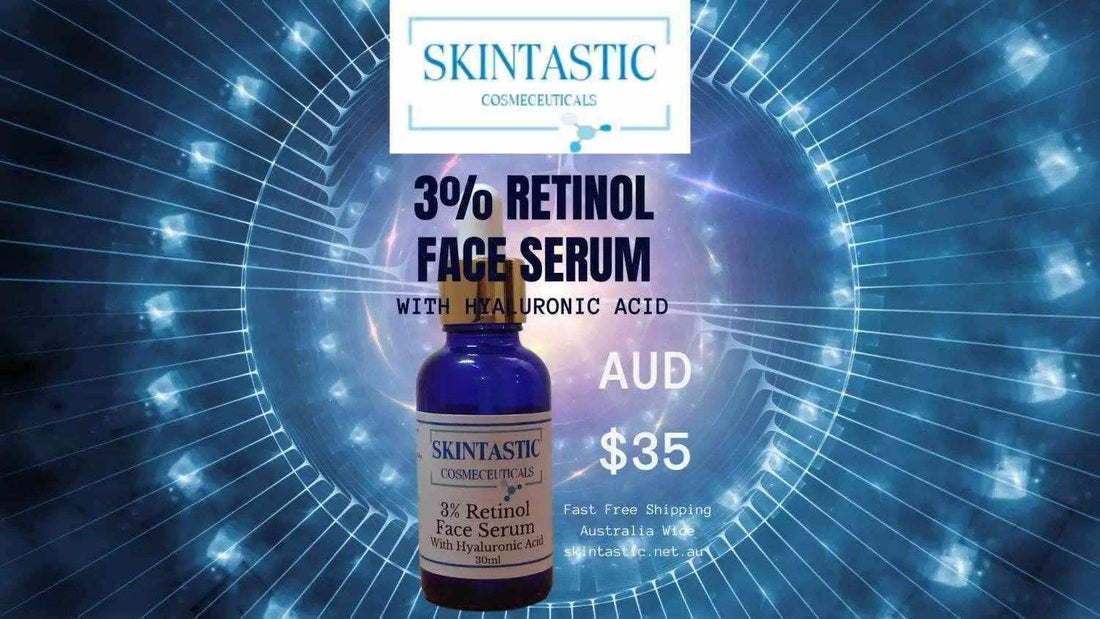
SKINTASTIC: Dermatologist-Approved Retinol Guide — An overview of retinol strengths, how to pace your build-up, and what packaging and textures best protect potency.
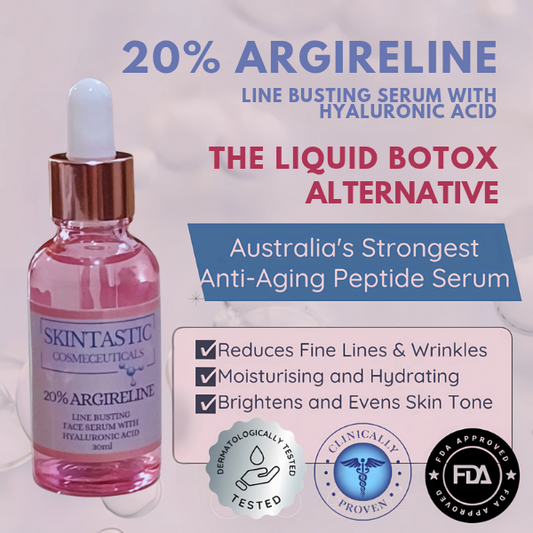
Understanding Argireline (Acetyl Hexapeptide-8) — How expression-line targeting peptides fit into a wrinkle routine and where they show the most visible benefit.
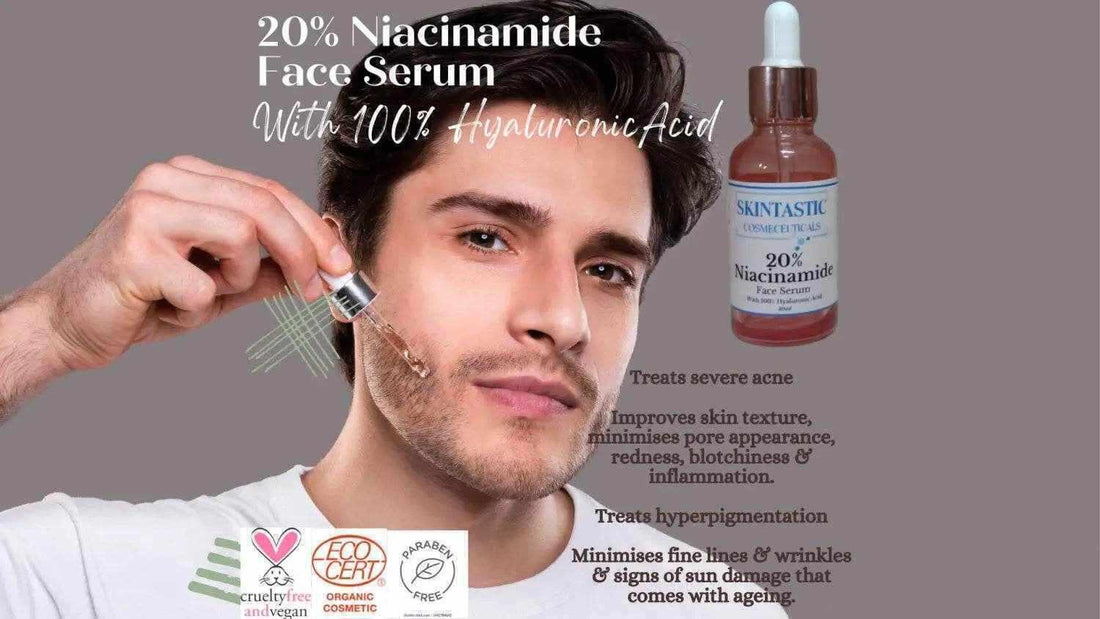
Niacinamide + Hyaluronic Acid Benefits — Barrier support, visible pore improvement, and hydration: the everyday backbone that makes strong actives easier to tolerate.

Best Face Serum for Wrinkles — A plain-language comparison of leading wrinkle-fighting actives and when to choose peptide vs. retinol-first approaches.
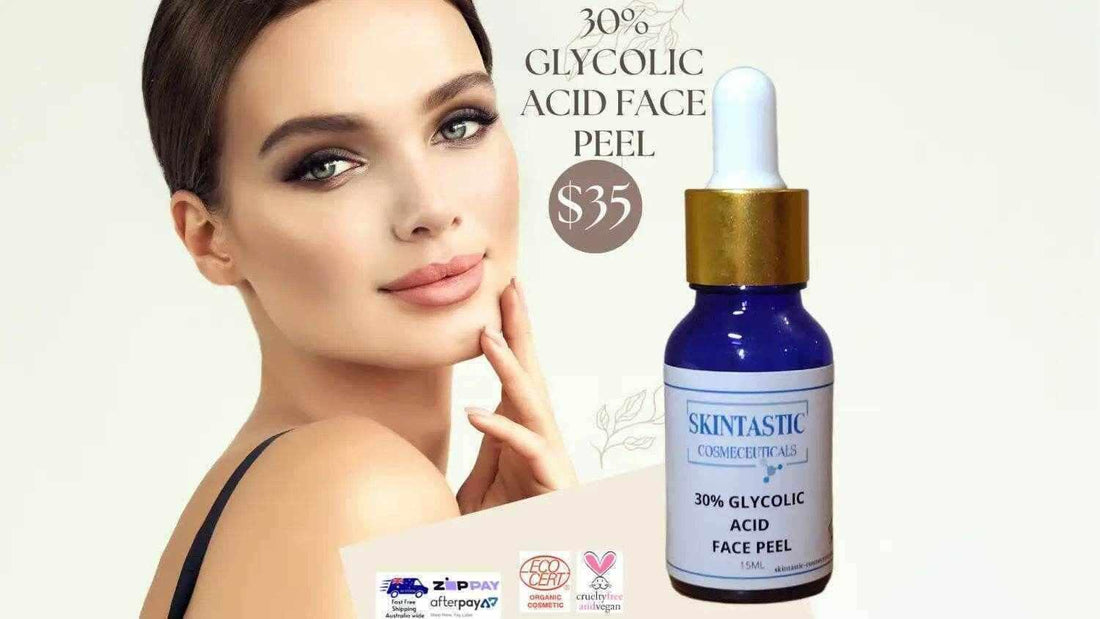
Glycolic Acid Face Peel Benefits — What concentration and contact time mean for results, how to space peels, and the role of post-peel hydration.
8) Interactive: Budget planner (under $100)
Use this planner to allocate your budget across actives. It suggests where to focus for your concerns. This tool does not display prices for specific products—use it to set priorities, then compare actual store pricing.
9) Interactive: personalised routine builder
Get a tailored schedule—like a custom suit pattern—for your skin type and goals. This builder creates a simple plan you can refine with patch testing and tolerance.
10) Troubleshooting and pro tips
- Stinging or tightness: Reduce frequency of retinol/peels; use hyaluronic on damp skin and a barrier-supporting moisturizer.
- Purging vs. irritation: Mild, transient breakouts can occur with retinol; persistent redness, burning, or peeling means pause, reset with niacinamide + hydration, then reintroduce more slowly.
- Layering order: Thinnest to thickest; water-based serums before creams. Wait a minute between layers if pilling occurs.
- Photosensitivity: Always wear SPF with acids/retinoids. Sun care is your “outer layer” that protects the craftsmanship underneath.
- When to seek advice: If you have active dermatitis, are on prescription topicals, or are unsure about tolerability, check with a healthcare professional before starting peels or retinoids.
Small tweaks, big gains: change frequency before changing concentration; separate strong actives on alternating nights if your skin runs sensitive.
11) Read more from SKINTASTIC
- SKINTASTIC MD: Expert Skincare Science
- All SKINTASTIC Cosmeceuticals Blog Posts
- Using Hyaluronic Acid for Wrinkles
- Understanding Argireline Serum
- How to Choose the Best Retinol Products (Australia)
These resources prioritise formulation details—percentages, pH, and packaging—so you can evaluate value beyond marketing language.
12) Final word on value and “materials”
The best medical-grade wrinkle routine under $100 in Australia is built on quality “materials” (pure, evidence-backed actives), smart “construction” (stability, pH, delivery), and a “tailored fit” (frequency and layering adjusted to your skin). That’s true luxury—craftsmanship that works for you, not against your budget. Start with the budget planner, build your routine, then stay consistent for at least 8–12 weeks to fairly judge results.
